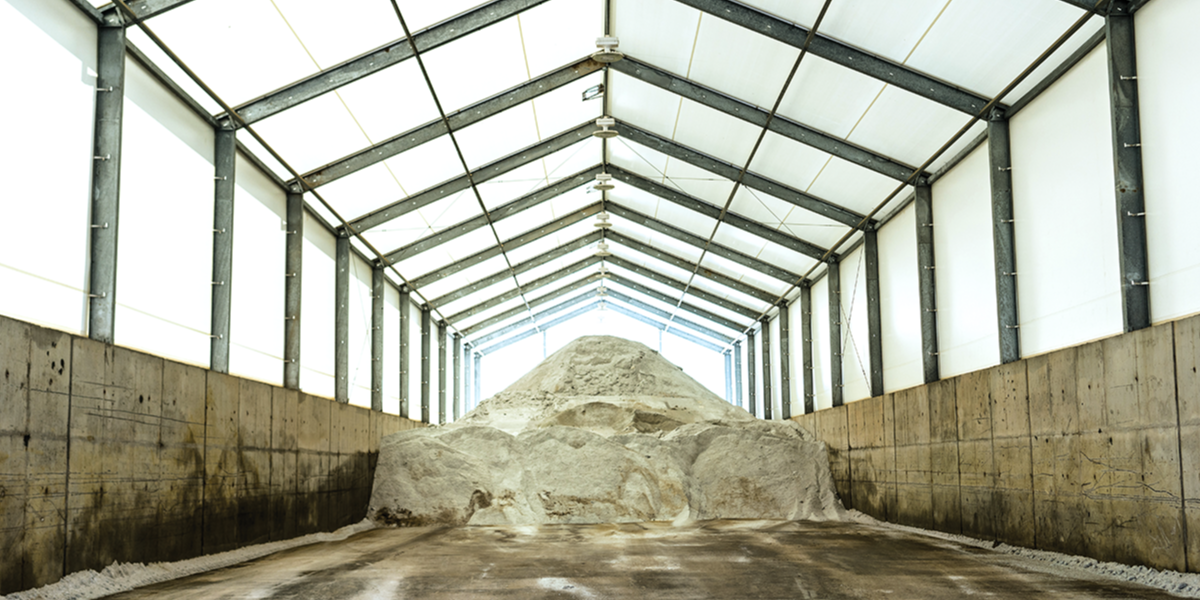Ventilation in Commodity Storage Buildings

Commodity storage buildings are a huge financial investment. It's important to consider not only the initial building cost but also the maintenance cost and the value of the stored items. When comparing building types used for commodity and grain storage, Legacy buildings have several advantages.
Options for Ventilating Stored Grain
Fabric buildings have non-conductive properties. Steel sitting in the sun will be warm, even hot, to the touch as steel absorbs energy from the sun and will remain hot hours after the sun goes down. In contrast, fabric will not retain heat from the sun or the outside environment.
There are several ways to add ventilation to fabric buildings. A well-ventilated building is key to successful commodity storage. Keeping fresh air moving along the entire pile helps keep commodities cool and mitigates the harmful effects of potential moisture damage.
End wall ventilation relies on air coming in through one side of the building and blowing all the way down the length of the building. It's difficult to keep a large building ventilated this way - unless there is a constant wind blowing into the building, there will naturally be dead air spots near the center of the building. Adding the number of end wall vents required for a large building can increase the building cost significantly.
See an example of a Legacy building with soffit ventilation.
Legacy buildings keep air moving over all the grain by adding ventilation under the overhangs and at the peak of a storage facility. Soffit ventilation allows fresh air to enter the length of the building from both sides - minimizing dead air spots within the building. This fresh air then pushes hot air out of the building through peak vents.
A passive air system, also known as gravity ventilation like this, keeps the commodity storage price low. Once the ventilation system is installed in the fabric building, it requires no maintenance. No matter how corrosive the environment or how heavy your stored material, there are no vents and no fans to corrode or clog. There's no cost to run the ventilation system either, since it requires no powered or "active" mechanical systems and there's no worry that it will quit during a particularly dry or hot spell. Passive ventilation is a sustainable lower cost option to achieve proper air flow and protect assets.
Of course, Legacy buildings can support more active ventilation systems as well. If your grain storage facility requires fans, intake and exhaust vents, open end walls or other ventilation systems, they can be added to your building. The fabric building will still remain cooler than a building made of steel. And a design-built building also gives you the options of using concrete walls for even more grain storage options.
Check out some of our bulk commodity fabric storage buildings! How do you store grain and agricultural commodities? Need a better solution for ventilation? Contact us to start your project.
Subscribe to our Blog
Recent Posts
- 5 Factors Every Project Owner Should Consider Before Approving Building Materials
- The 20-Year View: How Material Choices Impact Long-Term Operational Costs
- Climate Resilience in Commercial Construction: Why Traditional Methods May Not Be Enough
- Speed and Quality: The Role of Hybrid Building Materials
- Beyond the Bleachers: Designing Visually Striking Sports Facilities
